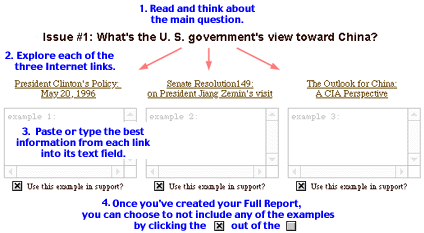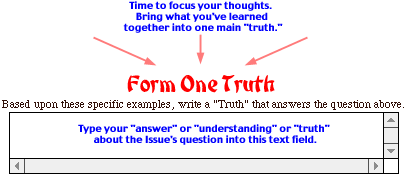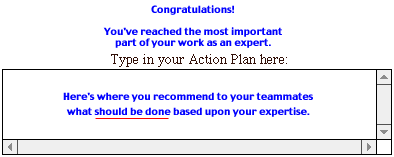
A Note about Javascript | Instructions | Sample | Reasons for this Activity?
The dossiers for each of the six roles in "Searching for China" make use of Javascript coding to create customized reports for each of the perspectives (i.e., senator, human rights activist, etc.). The Javascript is part of the Web page and does not download anything to your hard drive or create a "cookie." You must have a Javascript capable browser (Netscape Navigator 2.0+ or Microsoft Internet Explorer 4.0+) and Javascript must be "enabled" (which is usually the way the browsers are set). So, if you're running one of these newer browsers, you shouldn't have any trouble using these pages. If you do, let Tom March know.
Remember: None of the information you type or paste is saved, so it will disappear when you've finished with this page (or the computer freezes up). If you're working with a computer or browser that crashes often, be particularly careful and copy / paste and save your work as a word processor file first and then put the information into the correct fields in the dossier. Once you've finished a final draft of your Full Report, it's a good idea to save it as a text file or print it out.
Instructions

Additional Tips for the Steps Shown Above
 Use the main question to help get your mind focused on the key issue. You might try thinking of the answer before you explore any links. This way you'll already be awakening parts of your mind to the task.
Use the main question to help get your mind focused on the key issue. You might try thinking of the answer before you explore any links. This way you'll already be awakening parts of your mind to the task.
Read or skim through each link one at a time. Look for what you think is the most important example of information related to the question. It could be a fact, quotation, statistic, or insight you have yourself.
Drag across the information with your mouse. Then use the menubar on your browser to Edit - Copy the passage. Find your Role Page / Dossier browser window and Edit - Paste this example into the field located below its link.Note: Don't worry about taking out extra spaces between words (these will get fixed automatically). You can leave the words "example 1 (2 or 3) :" in the text field or copy it over, whatever you like best.
Later, after you have created your full report, you will decide whether you want to include each example in your report. This is done through the little checkbox under each field. If you don't want to use an example, just click in the checkbox to get rid of the "x".Repeat the above process for each of the three links for the Issue.
Finding the "Truth"

One way people learn and expand their understanding on a topic is to begin by looking at details and then drawing conclusions about the topic. This is called "induction" and "concept development." For example, if a Martian were asked what's the truth about cars after looking at several of them, it might say, "Geep, gwerp, galoop, ga-zing." This translates as: "cars have four wheels, an engine, seats, and they use fuel."
Your job in this phase of your dossier work is to combine what you've learned through the three Internet links into one statement that answers or at least addresses the main question related to the Issue.
Don't worry about including everything you've learned. Try to get the "big picture;" your detailed understanding of the topic will make itself known when you begin discussing with your teammates.
Repeat the above processes for each of the three Issues.
Finding the "Truth"

This is what it's all been leading up to. Your teammates (and the World Wide Web community) are waiting for your expertise. You've been looking from one perspective at the question: "What actions should the U.S. take in its policy towards China?" Here's where you deliver your opinion. Remember, there isn't one right answer, but the most clearly thought out and supported opinions will be the most persuasive to your teammates and others.
A suggestion is to write your action plan as one sentence that contains the word "should." This will help you make sure you're suggesting an action that needs to be taken. Your sentence and plan can have several parts, but it will be clearer and more convincing if it's delivered in one sentence. If you want help, look to the next section for sample Action Plan statements.
Samples
This section will provide you with examples of the types of things you will be looking for and writing as your complete the activities in your dossier. So that you can do your own thinking about China and not be swayed by what you read here, the examples will be on the subject of the rain forest (another complex topic in search of some deep thinking students).
Samples of Information to Look For
Fact
- Rainforests cover less than two percent of the Earth's surface, yet they are home to some 50 to 70 percent of all life forms on our planet.
Quotation
- As biologist Norman Myers notes, "Rainforests are the finest celebration of nature ever known on the planet.
Statistic
- If deforestation continues at current rates, scientists estimate nearly 80-90 percent of tropical rainforest ecosystems will be destroyed by the year 2020.
Example
- Global Rates of Destruction: equivalent to two U.S. football fields per second.
Samples of Truth Statements
- It's clear that the current levels of rain forest destruction can not go on unchecked without having a serious negative impact on the life of the planet.
- We can not use most of the world's energy supply to live in luxury and then tell people living in primitive conditions that they must stay that way.
- Ecotourism may be one solution to preserving rain forests, but it is not the complete answer.
Sample of an Action Plan
We should use the rain forest to prove that we can solve ecological problems facing the planet by respecting local people and looking to the industrialized countries to make sacrifices to achieve long term goals for our planet.
This activity was designed to guide you toward higher, more expert, thinking through what's been called scaffolding or prompting. Basically, this means that by starting you with a question and asking you to look at specific Internet links, you will find better information and do more critical thinking than if you were just given Internet access and had to figure out what to do with it all yourselves.
Then when you have to combine what you've learned from the links into a truth statement, you're doing higher level thinking that teachers like to call "synthesizing," "classification," "comparing and contrasting," and "concept development." What this means is that you're taken little bits and making a new whole. Maybe you'll do this by adding the information to something you've already thought about, or maybe you're creating a new insight (teachers call this adding to your semantic network or schema).
The reason you do it all three times is pretty simple. If someone wants to convince you of something and only give you one example or one good reason, that's not so convincing. If they give you two examples or reasons, that's pretty good. But if they give you three examples or reasons, that's persuasive!
![]()
|
Last revised February, 2005 Created by Tom March, Applications Design Team/Wired Learning |